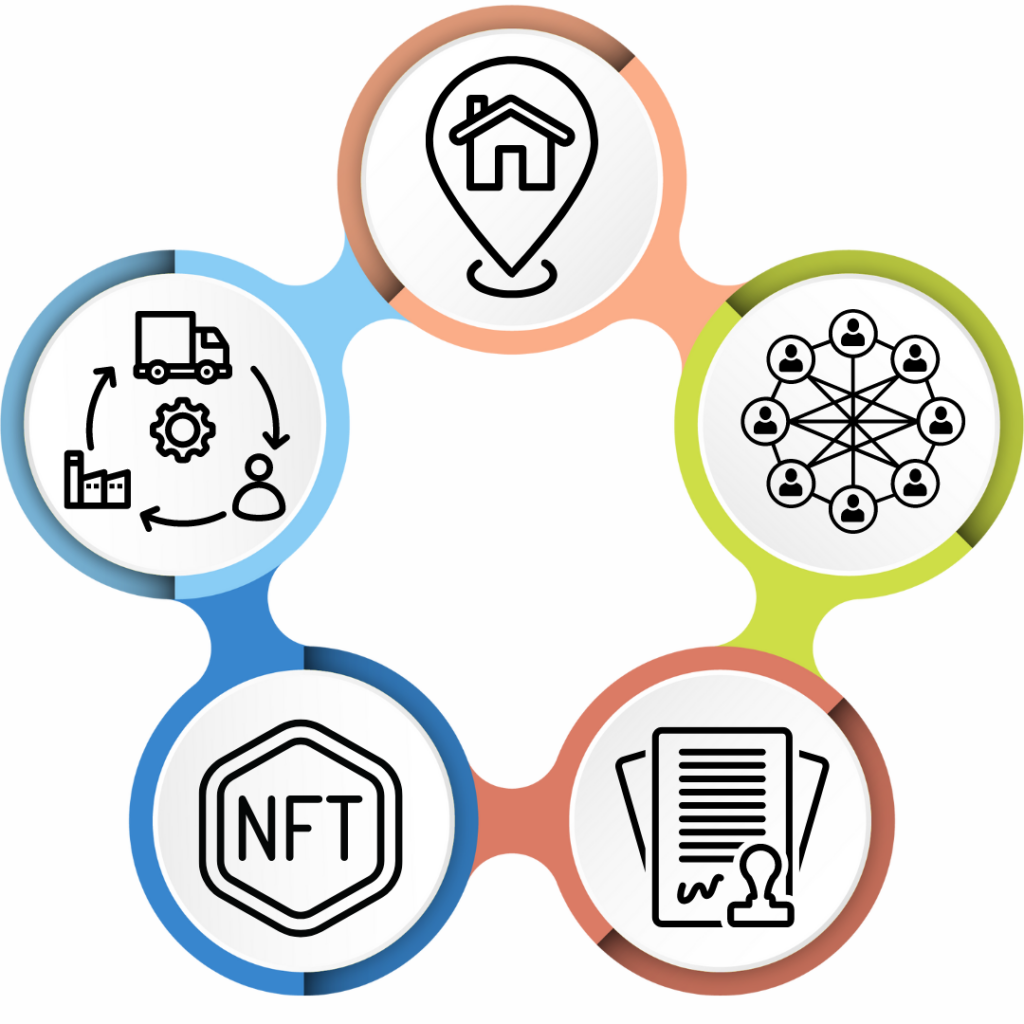Smart Contracts Explained: The Backbone of DeFi
Smart contracts are like automated agreements written in code. Think of them as digital vending machines. Just like you put money into a vending machine to get a snack, smart contracts automatically do certain things when conditions are met.
Nick Szabo, a legal scholar, and cryptographer, first introduced the concept of smart contracts in 1994. He imagined contracts as digital promises that could do things automatically when specific conditions are met.
In 2014, Vitalik Buterin, in the Ethereum white paper, built on Szabo’s ideas. He saw Bitcoin as an early but weaker version of these smart contracts. This idea led to smart contracts as we know them today, especially the various DeFi applications built on the Ethereum blockchain.
This guide has everything you need to know about smart contracts, how they work, their types, benefits, challenges, creating one, and much more. Whether you’re a blockchain enthusiast, a developer, or simply curious about the future of digital transactions, this complete guide will help you understand the revolutionary nature of smart contracts.
How Do Smart Contracts Work?

Smart contracts operate on a simple yet powerful principle: when specific conditions are met, they automatically execute pre-set actions. Here’s a step-by-step explanation of how they work:
- Coding the Contract: Smart contracts start with writing the agreement in code. This code outlines the rules and conditions of the contract. It’s like creating a recipe that the computer will follow.
- Blockchain Integration: The digital contract is then placed on a blockchain. A blockchain is a secure online ledger that records transactions. It’s tamper-proof, meaning you can’t change information once it’s recorded in the blockchain. This feature is crucial for trust and security. The most popular blockchain choices for smart contracts are Ethereum, Cardano, Avalanche, etc.
- Triggers and Execution: The contract waits for a trigger action. These trigger actions or conditions are pre-defined and can be anything agreed upon by the parties involved. For example, it could be a date, a completed task, or a received payment.
- Autonomous Action: Once triggered, the contract springs into action automatically. It executes the instructions coded into it. This could involve transferring funds, releasing information, or any other agreed-upon action. There’s no need for a middleman to oversee or execute the process.
- Finality: Once executed, the actions of the contract are final and irreversible, guaranteeing that all parties stick to their end of the bargain.
By automating processes and removing the need for intermediaries, smart contracts streamline transactions, reduce the potential for error, and provide enhanced security and trust. This technology is not just a futuristic concept; it’s a practical tool reshaping how we engage in digital agreements and transactions, especially in the crypto and DeFi space.
Types of Smart Contracts
Smart contracts come in various forms, each tailored to specific needs and industries. Here are some of the most common types:
- Token Contracts: These are foundational to creating digital currencies or tokens. They define token characteristics like name, value, and supply. They also facilitate transactions like transfers and balance checks. Examples include ERC-20 and ERC-721 tokens on the Ethereum network.
- Marketplace Contracts: Essential in decentralized finance (DeFi) and non-fungible tokens (NFTs), these contracts automate buying, selling, and trading on blockchain marketplaces. They replace traditional intermediaries, ensuring secure and transparent transactions. For example, Uniswap uses smart contracts to facilitate token swaps, while Rarible uses them to manage the buying and selling of NFTs.
- Airdrop Contracts: Used primarily for distributing tokens, these contracts can automatically airdrop or send tokens to a list of recipients. They’re designed for efficiency and often incorporate criteria to qualify recipients.
- Smart Wallets: Smart wallets handle transactions more flexibly than regular wallets. They can execute batch transactions, set limits, and even have recovery options. Examples include Argent Wallet and Gnosis Safe.
- Decentralized Autonomous Organizations (DAOs): These are complex contracts that govern entire organizations or networks, making decisions based on coded rules and member votes. Examples include MakerDAO and Decentraland. Read more about DAOs here.
Benefits of Smart Contracts
The following are some benefits of smart contracts that are hard to achieve with traditional contract methods:
- Transparency: All terms and conditions are visible and accessible to all relevant parties. This leaves no room for ambiguity or deception.
- Immutability: Once a contract is created, it cannot be altered. It guarantees that no one can change the agreement after the fact. This maintains trust among parties.
- Efficiency: They automate tasks and processes. This reduces the time and effort typically required in executing traditional contracts.
- Security: Since smart contracts utilize blockchain technology, they are highly secure against tampering and fraud.
- Cost-Effective: By eliminating intermediaries like lawyers or brokers, they reduce costs associated with drafting, negotiating, and executing contracts.
- Accuracy: Automated execution minimizes human errors that can occur in manual processing.
- Global Reach: One can execute smart contracts regardless of geographical boundaries, opening up international opportunities and collaborations.
Smart Contract Use Cases

Smart contracts are versatile and have numerous practical applications across various sectors, which are constantly expanding as we speak. The following are some common use cases on how this technology is streamlining processes and introducing more efficient ways to complete tasks:
Real Estate: Smart contracts cut down on paperwork and costs in real estate. They can handle the transfer of property titles and manage payments automatically. This makes buying and selling property faster and more straightforward, with less need for real estate agents or lawyers. Moreover, it also makes the process more transparent for all parties, leaving no room for ambiguity or deception. Read more about how smart contracts are revolutionizing the real estate sector here.
Supply Chain Management: Supply chain management workers can use smart contracts to track products from creation to delivery. They can use the technology to record each step in the product’s journey. This will also reduce mistakes and fraud, making the whole supply chain more trustworthy and efficient. Learn how to build a supply chain management smart contract here.
Decentralized Applications (dApps): These are apps that run on blockchain. Smart contracts in dApps primarily offer financial services and products, like loans, staking, automated trading, etc., without a central authority. However, other use cases include gaming, cloud storage, and social media.
Digital Asset Management: Many cryptocurrencies and NFTs use smart contracts to facilitate secure transactions.
Legal Contracts: Smart contracts can be used to enforce legal agreements. For example, they can release payment (action) as soon as a job is done (condition) without waiting for manual processing. This is especially helpful in sectors where quick and reliable agreement fulfillment is essential. Read more about how smart contracts are disrupting the legal landscape here.
Challenges and Limitations
Smart contracts, while innovative, have several challenges and limitations:
Code Vulnerabilities: Since smart contracts are based on code, any bugs or errors in the code can lead to serious issues, including breaches and hacks. For instance, the DAO attack on Ethereum in 2016 was due to a flaw in the smart contract code, leading to the loss of over $50 million in Ether. This highlights how coding bugs can result in significant financial losses.
Legal and Regulatory Uncertainties: Smart contracts operate globally, but laws vary by country. For example, a smart contract that’s legally binding in one country may not be recognized in another, creating confusion and potential legal disputes.
Complexity and Cost: Developing intricate contracts, like those used in decentralized finance (DeFi) platforms, requires expert blockchain programmers. And hiring these experts can be costly and time-consuming.
Immutability: While immutability ensures security, it also means that one can’t easily fix errors in a smart contract. For example, if a contract automating payments has a flaw in the payment formula, it cannot be corrected without deploying a new contract.
Integration with External Systems: Smart contracts often need real-world data. However, securely getting this data is a challenge. For example, a contract depending on weather data needs a reliable external source or an ‘oracle.’ But what if the oracle is compromised? Then the integrity of the contract is at risk.
These challenges highlight the need for ongoing development and legal frameworks to fully harness the potential of smart contracts.
Creating a Smart Contract
Creating a smart contract is a complex but rewarding process that requires a careful blend of technical expertise, thorough testing, and ongoing oversight. The following is a step-by-step guide to creating a smart contract:
Define the Purpose: First, clearly identify what you need the smart contract to achieve. This could range from automating payments to managing cryptocurrency transfers.
Choose the Right Blockchain: Select a blockchain platform that suits the contract’s needs. Ethereum is popular for its robust smart contract capabilities, but other blockchains like Binance Smart Chain or Cardano also offer great features.
Learn the Programming Language: Smart contracts are written in specific programming languages. For Ethereum, it’s Solidity. Learning these languages is crucial for effective smart contract development.
Write the Code: Develop the code and ensure it accurately reflects the terms and conditions of the agreement. This step requires precision and a deep understanding of both coding and the contract’s intent.
Test the Contract: Rigorously test the contract in a controlled environment to find and fix bugs. This step is critical to ensure the contract functions as intended without vulnerabilities.
Deploy on the Blockchain: Once tested, deploy the contract on the chosen blockchain. This involves paying any necessary network fees, known as ‘gas’ on Ethereum.
Verify and Publish: After deployment, verify the contract to ensure it operates correctly in the live environment. Then, it’s published and becomes immutable.
Monitor and Maintain: Although the contract is immutable, monitoring its performance and interaction with other contracts or external data is essential for long-term success.
Future of Smart Contracts
The future of smart contracts looks bright, with several exciting developments on the horizon.
We’re moving towards a world where creating and using these contracts won’t require expert coding knowledge due to the advancement of AI and no-code and low-code platforms. This means more people can use them for a wider range of purposes.
Legal systems around the world are also starting to recognize this technology. Another exciting development is the ability for smart contracts to work across different blockchain networks, increasing their usefulness.
Plus, with better security and the possibility of linking smart contracts to real-world devices, we’re looking at a future where these digital agreements could be a part of everyday life, from managing supply chains to making cities smarter.
FAQs
Does Bitcoin have smart contracts?
Bitcoin’s smart contract capabilities are relatively limited, especially when compared to other blockchains like Ethereum. While Bitcoin can execute smart contracts, its scripting language is less complex and not designed for elaborate contracts. This means Bitcoin’s smart contracts are mainly used for basic functions like multi-signature transactions rather than the more complex applications seen on other blockchain platforms.
Are smart contracts written in Python?
Smart contracts are typically not written in Python. Programmers instead use blockchain-specific languages like Solidity, Vyper, and Chaincode. Python is instead used for blockchain and smart contract development tasks but not for writing the smart contracts themselves.
Can I create smart contracts without coding?
Yes, it’s possible to create smart contracts without coding. There are platforms and tools, like OpenZeppelin, Remix, and Thirdweb, available that offer user-friendly interfaces for building smart contracts through drag-and-drop features or pre-made templates. These tools abstract the coding aspect, making it accessible for those without programming skills.